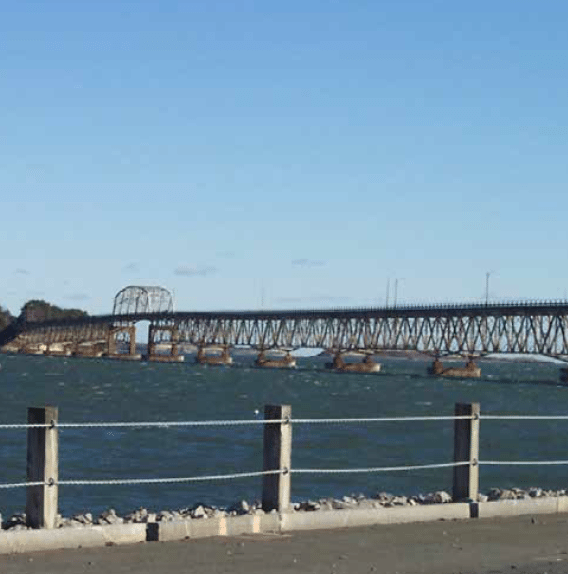Boston apparently intends to go full speed ahead with rebuilding Long Island Bridge for traffic to get to an addiction recovery center on the harbor island. The City believes that their approach to construction will minimize heavy traffic through Quincy streets and mitigate that its concerns over public safety. It was just about a year ago that the topic had resurfaced and press secretary for Mayor Walsh, Nicole Caravella said in an email that “We have no new updates as far as design and development of a new bridge.” That was then, this is now.
Chris Osgood, Boston’s chief of streets, said the city will build the sections of the planned $92 million bridge on shore then float the pieces out to the existing stanchions to put into place. Top of Form
“This will minimize disruption,” Osgood told reporters in a briefing to go over Mayor Marty Walsh’s plan to submit his Notice of Intent to the Conservation Commission, the first concrete step in getting approval reconstructing the span.
But a spokesman for Quincy Mayor Thomas Koch said, while he is “always open to discussions” with Walsh, Mayor Koch will not budge on his opposition to a rebuilt Long Island Bridge. “Mayor Koch has a great deal of respect and a great relationship with Mayor Walsh,” said Koch spokesman Christopher Walker. “But if the conversation is going to start and end with ‘We’re building a bridge,’ we’re going to have to find something else to talk about. The bridge is a nonstarter.”
Quincy City Councilor Anne Mahoney, who has submitted several public records requests to Boston officials about the city’s plans to rebuild the bridge, said Boston has not engaged with Quincy despite the claim the recovery center will be a regional facility. “They should engage in conversations with us,” said Mahoney. “They’re not being neighborly. They haven’t shown us anything, basically boycotted my records request.
In 2014, Walsh closed the bridge, first opened in 1951, and ordered it to be dismantled after state officials declared it unsafe. Walsh was forced to relocate all the social services programs, including the homeless shelter and addiction treatment programs, to move back into the city. Advocates are split on the merits of this venue-based approach to both the method of treatment programming and long-term planning for addressing the opioid addiction crisis. The island has also housed a youth-based social, cultural and recreational facility.
Earlier this year, Walsh announced he would put a new bridge in place and build a full campus on the island dedicated to addiction treatment and recovery. But Koch and others say they support using the island for that purpose, but would rather see alternatives to the bridge, such as a ferry, to bring people to and from Long Island. “If they were really serious about a recovery center, they could take that $100 million and get one up and running and use a ferry service in a matter of months, not years,” said Quincy City Councilor William Harris, who lives in and represents Squantum.
Boston officials dismissed the ferry option with weak push back, saying the unpredictable weather in the region could make regular transports difficult, as well as hamper the need for emergency evacuations for health or safety reasons. But Quincy officials said that view has been the problem from the outset. “That’s the issue – they just dismiss it,” said Walker, Koch’s spokesman. “We would like to see some effort put into it. They’ve dismissed it, they haven’t proved it. They only say it’s not viable.”
Squantum doesn’t plan for a peaceful summer, it appears.










